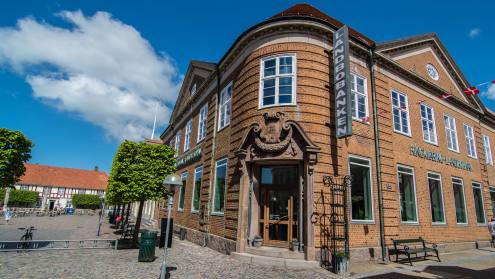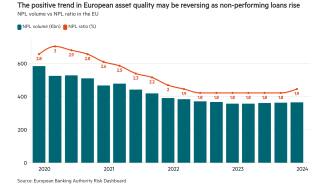Leisurely holidays are a thing of the past for Italy’s top bankers; even the year-end break no longer brings them respite. On December 28, 2006, Giovanni Bazoli and Enrico Salza, chairmen of Banca Intesa and Sanpaolo IMI respectively, met in the office of a Turinese notary to sign the merger document that joins the two banks. There had been no upsets when the banks’ shareholders met on the first day of the month and voted to approve a deal that had caught everyone napping when it was announced at the end of August. Unsurprisingly, Europe’s biggest banking merger of the year has created a new leader for Italy’s banking sector.
On January 2, Mr Bazoli, now chairman of Intesa Sanpaolo’s supervisory board, and Mr Salza, who has become chairman of the new bank’s managing board, wrote to account holders. The bank’s network of 5500 branches in Italy serves, according to the bank, more than 12 million clients while a further six million are served through a network of 1400 branches abroad, mainly in central and eastern Europe. Account holders who read the small print would have noticed that Intesa Sanpaolo’s registered offices are in Turin, Sanpaolo IMI’s home.
However, the new bank’s heart is in Milan, Italy’s financial capital and the base of Banca Intesa, whose managing director, Corrado Passera, has become Intesa Sanpaolo’s chief executive. And Milan will be the focus of attention this year partly because two major mergers, agreed in the autumn and waiting approval by shareholders, involve banks that are strong in and around the city.
Milanese consolidation
Three of the four parties are banche popolari, co-operative or mutual banks, one of which is based in Lodi, just south of Milan. The fourth, Banca Lombarda, embraces the Banca del Monte di Milano, the Lombard capital’s oldest bank, among the institutions it has brought together over recent years.
The first of the mergers was announced in mid-October. It concerns a bank that won an international name in 2005: the Banca Popolare Italiana (BPI), or Banca Popolare di Lodi as it was called until shortly before it obtained notoriety that led to the investigation and arrest of senior managers and the resignation of the Bank of Italy’s governor at the end of 2005.
Another result of the scandal was the revelation of BPI’s fragile finances and need for a robust partner. That partner is the Banca Popolare di Verona e Novara (BPVN) and the deal that brings them together, approved by the banks’ boards in mid-December, will create Italy’s third largest banking group.
One month later, Banche Popolari Unite (BPU), created from the merger of three Lombard banks in June 2003, announced it would be taking over Banca Lombarda. With a combined network of almost 2000 branches, the new banking entity will rank fourth in the Italian banking league, leaping above such well-known banks as Capitalia and Monte dei Paschi di Siena. The banks’ shareholders will meet on March 3 to vote on the takeover and a week later the shareholders of BPI and BPVN will meet to vote on their merger.
Regional origins
The names of the various banks that have joined forces to form the four now in the news tell the story of their regional roots. In addition to the Banca del Monte di Milano, the Banca Lombarda’s banking genes include the Cassa di Risparmio di Cuneo, the savings bank of a wealthy city in Piedmont, and the Banca del Monte di Pavia, a historic bank based near Milan.
As well as bringing together banks from Verona (in the Veneto) and Novara (in Piedmont), the BPVN has grown over recent years by taking over the Banca San Geminiano e Santo Prospero, a bank in Modena (Ferrari’s home town) in the Emilia Romagna region, and Credito Bergamasco, a bank in Bergamo, east of Milan.
Such regional consolidation is evident in the market shares the merged entities will hold. The marriage of BPU and Banca Lombarda will make the new bank Lombardy’s second largest group with a market share of 15%, for example. And in the case of BPVN and BPI, the group resulting from the merger will hold a market share of 10% in northern Italy.
That is important. All four banks are essentially northern concerns and reap the benefits of operating in Italy’s richest regions.
From Piedmont in the west to the Veneto in the east and south to Emilia Romagna, these are the regions whose cities and towns are the homes of the thousands of small and medium-sized enterprises (SMEs) that are the backbone of Italian manufacturing. And they are also the regions where agriculture flourishes.
Local development
Ever since 1864, when the first banca popolare opened its doors in Lodi, the aim of this category of mutual, co-operative banks has been to promote local economic development. Luigi Luzzatti, the man behind the bank in Lodi, had been impressed by how this form of credit in Germany allowed farmers and small firms to escape the clutches of loan sharks and to develop their businesses. By 1880, farmers, tradesmen, shopkeepers and the owners of small businesses in Italy had set up 141 banche popolari.
Numbers continued to grow and in 1970 the Associazione Nazionale fra le Banche Popolari (Assopopolari, the association that groups the category) had almost 200 members. However, over recent years, particularly since liberalisation and privatisation got started in the early 1990s, and banks became aware of the need to grow, the ranks of the banche popolari have thinned.
Thinning ranks
From 108 in 1990, the number fell to 61 last year, of which 19 headed groups that included 20 other banche popolari as well as 32 banks that were joint stock corporations. Just 22 were independent, standalone banche popolari.
Figures from Assopopolari show how the category’s original mission continues to drive the banks. Banche popolari account for more than one-fifth of loans to firms. About 60% of that lending is in just three regions (Lombardy, the Veneto and Emilia Romagna). Carlo Fratta Pasini, chairman of both BPVN and Assopopolari, has clear ideas about the banche popolari’s role with SMEs. Basically, it is a matter of the local roots that banks have kept even while they have been growing. “The banche popolari continue to have businessmen clients as directors and on credit committees, thereby consolidating a valuable local relationship between business and finance,” he says.
Yet the banche popolari and their way of doing things have their critics. Mostly, complaints concern per capita voting – one-man one-vote, irrespective of the number of shares held – and limitations on the size of shareholdings. This has led to unsuccessful complaints to the European Commission that the category infringes rules on the free movement of capital. “One-man one-vote is a fundamental part of mutuality,” notes Giuseppe De Lucia, Assopopolari’s secretary-general, who says that the philosophy is “nobody is the boss – all are bosses”.
That sounds fine in theory but it opens the way, in practice, to giving employees, who are usually shareholders and are the most diligent attenders of shareholders’ meetings, the power to elect or veto people to run the bank.
Moreover, voting power can be useful when ownership is in question. And this is the source of another complaint, that banche popolari take over joint stock banks in market operations while being unassailable themselves. BPU’s takeover of Banca Lombarda is such a case. “But takeovers go the other way as well,” says Mr De Lucia, pointing to ABN AMRO’s takeover of Banca Antonveneta, a banca popolare that transformed itself into a joint stock bank, and Monte dei Paschi di Siena’s purchase of control of Banca Agricola Mantovana.
Shareholder backlash
Arguments over Italy’s banche popolari seem sure to continue and attention will not be lacking. BPI’s shareholders’ meeting in March, where some observers think that the bank’s board will have difficulty in winning acceptance for the merger with BPVN, will certainly be followed closely.
In addition, the spotlight will be on Banca Popolare di Milano, like UniCredit, Capitalia and Monte dei Paschi Siena, an absentee from last year’s merger feast. What chance that the large Milanese mutual transforms itself into a joint stock bank and gets hitched to one of those three? Or perhaps that notion would be squashed by its employees.











